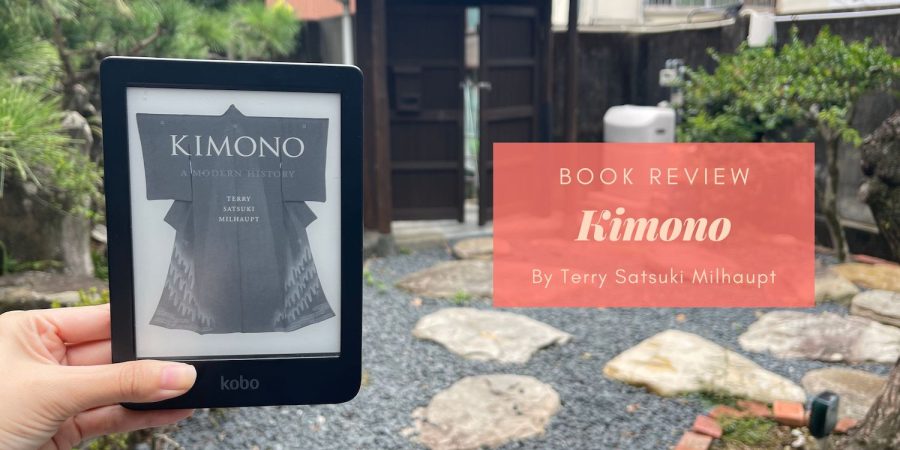After listening to やさしい民俗学‘s series on the history of the kimono, I decided to read Kimono – A Modern History and brush up on my knowledge of the kimono.
As the title indicates, this book is about the kimono from 1850 onwards, till about 2014 when the book was published. Split into six very long chapters, Kimono covers:
- The rise of kimono pattern books and how the kimono started becoming an object you could buy to indicate status
- How Westernisation and the modernisation of Japan in Meiji-era affected the kimono, both as something to wear/as a symbol of Japan and also the way it was made (with imported dyes/motifs/etc)
- How kimonos slowly came to represent Japan, in all its tradition
- The way that kimonos were exported to the West and how they became conflated with the geisha and the idea of alluring women
- Kimono designs, particularly during WWII with its austerity measures
- The post-WWII era, with the proliferation of kimono schools and the change from kimono as everyday wear to kimono as a cultural relic
For me, this is a book that demands a reread. Milhaupt goes into the the more technical aspects of making a kimono, especially in the latter half other book, and I have to admit that a lot of the information about how certain dyes are created or how certain pieces of cloth are made went over my head. I will definitely have to reread the book to get a better understanding of that, as well as more information on the various designers mentioned in the book.
But even with struggling with some of the information, I found most of the book to be interesting and thought provoking. This was especially in the middle section, when Milhaupt talks about how the kimono was exported to the West. For example, I found this quote very relevant to the kimono industry today:
“The continued production of kimonos and traditional Japanese fabrics, whether as clothing to wear on special occasions, as examples of ‘traditional Japanese craftsmanship’, or as works of art, raise further questions about the rationale for preserving ‘traditions’. When, for example, does assimilation of the novel cross over into the realm of ‘tradition’, regardless of weather the original source of inspiration was domestic or international?”
Well actually, not just kimono. I think it can be expanded to talk about traditional dress more generally, as well. In fact, when talking about the West, Milhaupt briefly discusses the concept of appropriation, and that’s where I realised that it’s not just who is wearing the clothes but how the clothes are made – what happens when someone uses Western technology (in the Meiji-era, that would be foreign dyes) to make kimono? Especially if the kimono comes to represent traditional Japanese culture, how does the use of things that are not natively Japanese (though that is also complex given how much the Japanese borrowed from the Chinese to make their own) fit when we consider appropriation and who the kimono can be worn by? It’s a pity this book was written just before the Boston Kimono Wednesday controversy because I think there’s a lot we can reference from the past when analysing that incident.
Overall, this is a fascinating book and one that I think pairs very nicely with Kimono Now, which is an even more recent look at kimono. While Kimono: A Modern History may not be for everyone (it really does get quite academic at times!), I think it would interest those who are keen to learn more about this aspect of Japanese culture.

Just had to google Boston Kimono Wednesday, every day is a school day 👀
If you have some (a lot) spare time, I highly recommend Japanese American in Bostons series of posts on the subject. I think she did a good job representing how the local Japanese-American community viewed the whole thing: https://japaneseamericaninboston.blogspot.com/2015/07/monets-la-japonaise-kimono-wednesdays.html
I’ll take a look!! Might not deep dive but I’ll definitely peruse haha